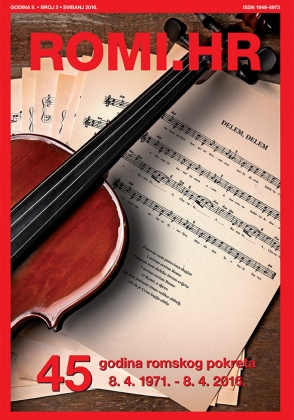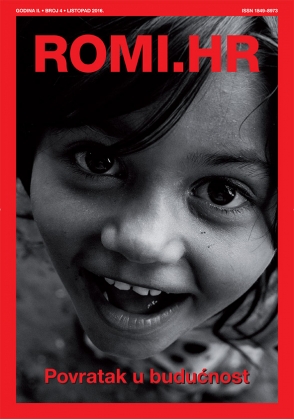Features ROMI.HR
/Roma have a significant place in the cinematic world with their colorful culture and way of life, contributing to the richness of the characters and social awareness. Turkish cinema produced various films about Roma, especially in the 1960s and 1970s.
In art, the Roma have often been depicted through romanticized or exoticized lenses, emphasizing their nomadic lifestyle and vibrant culture. The portrayal of Roma in cinema has often been marked by stereotypes, depicting them as exotic, mysterious, or criminal. However, more recent films have aimed to provide nuanced and authentic representations, focusing on the cultural richness and challenges faced by Roma communities.
Turkish cinema has produced numerous works reflecting social events, cultural richness, and ethnic diversity. Among these, the Roma people have also found representation, with their lives and stories brought to the big screen. The Roma hold a significant place in the cinematic world with their vibrant culture and lifestyle, contributing to character richness and social awareness. Turkish Cinema produced various films about Roma, especially in the 1960s and 1980s. The 1960s in Turkey are often seen as the country's most liberal era, both socially and ideologically. The examples from the 1960s generally bear the traces of Yeşilçam melodramas and are largely adapted from Erich von Stroheim’s work Paprika. Another key aspect of these films is their origin in Yeşilçam, the prolific Turkish film industry, renowned for its melodramas and mainstream narratives centered around star actors.
Pertinent films of this period are: Çingene (Gypsy), Altın Küpeler (Golden Earrings), Çingene Güzeli (Gypsy Beauty), Kadın Değil Başbelası (Troublemaker, not a Woman), Paprika Çingene Aşkı (Paprika, Love for Gypsy), Ateşli Çingene (Hot Gypsy), Karmen (Carmen) and etc. Yeşilcham stars such as Turkan Shoray and Kadir Inanır were filmed in these films.
Yeşilçam melodramas are traditional films with happy endings, often featuring music and Romani dance. These narratives revolve around women and couples, depicting a family or close-knit community, love triangles, and moral dilemmas. Protagonists are often victimized, but eventually, conflicts are resolved to reach a happy end, often resulting in the couple's reunion, even if it's not through marriage. Melodrama is about the power of the victim and the paradoxically active role of suffering. Both men and women suffer, with women often inviting suffering themselves as devastating femme-fatales. Through suffering, men's virtuousness and women's righteousness are approved, leading to the couple's deserved reunion.
Early films often show a matriarchal community where older women are powerful figures, like sorcerers or queens. While the Roma chief is usually a man, the real leader is often depicted as a woman. Younger women are shown as daring and seductive, openly expressing their sexual desires. These films frequently feature promiscuity and extramarital relations. Despite being positive in their depiction of gender roles, they also use a fetishizing camera style, often showing a beautiful "Gypsy" woman dancing in front of male musicians. While early Turkish films depict Roma women as powerful figures and challenge traditional gender roles, they also perpetuate harmful stereotypes by portraying them as seductive and promiscuous. This fetishizing gaze objectifies Roma women, reinforcing prejudices that depict them as morally loose and contributing to their ongoing marginalization in society.
A common feature in early Roma films is the use of formal and proper Turkish without any accents or dialects, a legacy of the Yeşilçam era, where ethnic characters were expected to speak pure Turkish. Despite frequent musical interludes, actual Roma music is rarely featured. Instead, what is perceived as Roma rhythm often appears in Turkish classical, pop, or arabesque music. Although some later films include Roma music, the initial lack of it reflects Yeşilçam's tendency to erase ethnic identities. The casting of prominent Yeşilçam stars in leading roles also contributed to a more positive portrayal of Roma in these films.
While the positive portrayal of Roma in early Turkish films might seem favorable, it comes with significant limitations. These films often depict Roma as merely entertaining or exotic figures, ignoring serious issues like poverty or unemployment. Class differences are touched on lightly, and the use of the term "Gypsy" can be derogatory and is rarely linked to real social exclusion. Instead, Roma characters, particularly women, are shown as desirable and exotic, which aligns with the concept of "commodification of otherness"—where marginalized cultures are exploited for the pleasure and fantasies of more privileged groups.
Overall, early Roma films from the Yeşilçam era may appear to present a positive view of the Roma, but they often reinforce outdated stereotypes and binaries, such as advanced vs. primitive and civilized vs. barbaric. These films cater to mainstream Turkish society’s tastes and are not authentic representations of Roma life, as they are created by Roma filmmakers that not familiar with problems and life of Roma. Instead, they reflect the voyeuristic gaze of non-Roma, commodifying Roma culture for visual and narrative entertainment.
 Back to Features
Back to Features

.jpeg)











